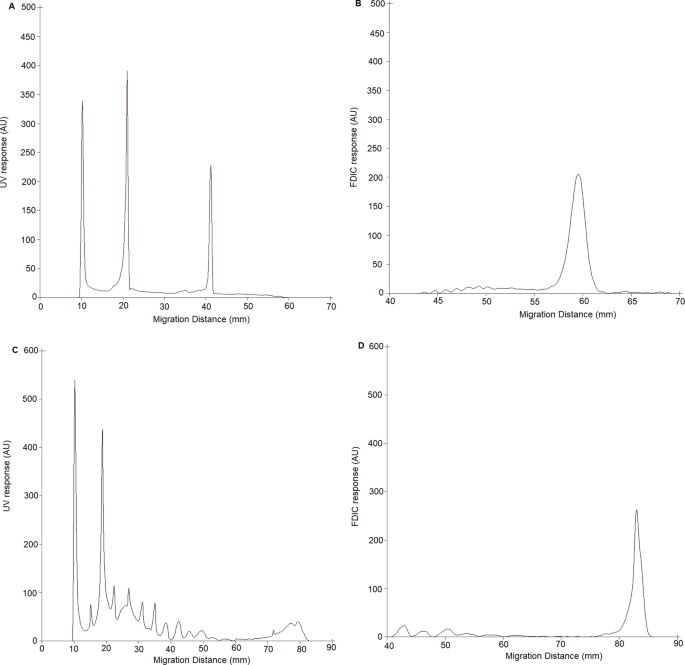Gradient high-performance thin-layer chromatography for characterizing complex hydrocarbon-containing products
JPC – Journal of Planar Chromatography – Modern TLC
Pub Date : 2023-11-10
DOI:10.1007/s00764-023-00256-x
引用次数: 0
Abstract
Abstract Classic saturates, aromatics, resins, and asphaltenes (SARA) analysis has long enabled the chromatographic separation of complex hydrocarbon-containing products into these four families. This simplification often does not provide sufficient or correct information on the relationship between the composition of the products and the process variables studied. The obtention of profiles by gradient automated multiple development (AMD) is an interesting alternative to obtain extended SARA separations with increasing level of complexity for heavy petroleum products that adequately represent the entirety of the sample. An optimized 20-step gradient based on tetrahydrofuran (THF)‒dichloromethane‒ n -heptane over a total migration distance of 83 mm is proposed here to characterize all types of heavy oil products. The combination of ultraviolet (UV)–densitometry (at 201, 228, and 273 nm), fluorescence detection by intensity changes using berberine cation, together with on-plate recording of UV spectra of separated peaks and the comparison with those of standards, allow for a deep characterization of chemical families. In the apolar zone of the chromatogram saturates, naphthenes, naphteno-aromatics, alkyl-aromatics, and aromatics with different degrees of condensation are detected. The use of THF, both in the plate precleaning stage and in the first stages of the gradient, is responsible for the satisfactory resolution of the resins in the polar zone. AMD chromatographic zones can be related to peaks from hydrocarbon groups in classical SARA. The application of this gradient to different types of products allowed for the relation of the profiles of bitumen to their origin, differentiation of the resin part trapped in asphaltenes, control performance of deasphalting in hydrorefining products, and the control of the composition of base oils.

表征复杂含烃产品的梯度高效薄层色谱法
经典的饱和烃、芳烃、树脂和沥青质(SARA)分析长期以来一直使复杂的含烃产品的色谱分离成为这四个族。这种简化通常不能提供关于产品组成和所研究的工艺变量之间关系的充分或正确的信息。通过梯度自动多次开发(AMD)获得剖面是一种有趣的替代方法,可以获得扩展的SARA分离,其复杂性不断提高,可以充分代表整个样品的重质石油产品。本文提出了一个优化的基于四氢呋喃(THF) -二氯甲烷-正庚烷的总迁移距离为83 mm的20步梯度,用于表征所有类型的重油产品。紫外(UV)密度测定(在201、228和273 nm处)、利用小檗碱阳离子进行强度变化的荧光检测,以及分离峰紫外光谱的板上记录和与标准品的比较,可以对化学家族进行深入表征。在色谱的极性区检测到饱和烃、环烷、环烷-芳烃、烷基-芳烃和不同缩合程度的芳烃。在印版预清洗阶段和梯度的第一阶段,THF的使用是导致极区树脂令人满意的分辨率的原因。AMD色谱带可以与经典SARA中烃基的峰相关联。将这种梯度应用于不同类型的产品,可以使沥青的剖面与其来源相关联,区分被困在沥青质的树脂部分,控制加氢精制产品中脱沥青的性能,以及控制基础油的组成。
本文章由计算机程序翻译,如有差异,请以英文原文为准。
求助全文
约1分钟内获得全文
求助全文

 求助内容:
求助内容: 应助结果提醒方式:
应助结果提醒方式:


